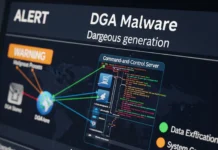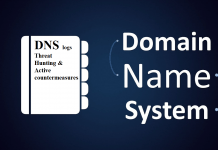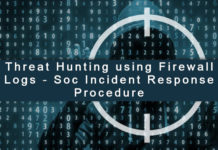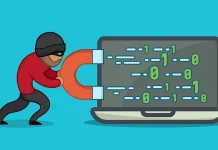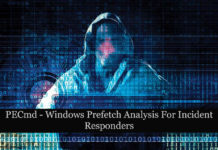In the shadowy corners of cyberspace, where security researchers have yet to venture and antivirus databases remain empty, zero-day malware thrives as one of the most dangerous threats facing modern organizations. These previously unknown malicious programs exploit vulnerabilities that exist in complete secrecy, striking with devastating effect before anyone knows they exist.
The Nature of the Unknown
Zero-day malware represents the cybersecurity equivalent of a perfect crime – an attack that exploits vulnerabilities unknown to security vendors, system administrators, and even software developers. The term “zero-day” refers to the number of days that security professionals have had to develop and distribute patches or signatures for the threat, which in this case is literally zero.
Unlike conventional malware that security systems can identify through established signatures or behavioral patterns, zero-day threats operate in complete anonymity. They leverage previously undiscovered software vulnerabilities, protocol weaknesses, or system configuration flaws that provide attackers with unrestricted access to target systems.
The window of opportunity for zero-day attacks can extend from days to months, or even years in some cases. During this period, the malware enjoys complete immunity from traditional detection methods, making it an invaluable asset for cybercriminals, nation-state actors, and advanced persistent threat groups.
The Economics of Unknown Exploits
The underground economy surrounding zero-day malware has created a sophisticated marketplace where unknown vulnerabilities command premium prices. Government agencies, cybercriminal organizations, and even legitimate security companies compete for exclusive access to these digital weapons.
Vulnerability brokers serve as intermediaries in this shadowy market, purchasing zero-day exploits from researchers and selling them to the highest bidder. Prices can range from thousands of dollars for common application vulnerabilities to millions for exploits targeting critical infrastructure or widely-used operating systems.
This economic dynamic creates perverse incentives where security researchers may choose to sell vulnerabilities rather than report them to vendors for patching. The financial rewards for keeping exploits secret often exceed those offered by legitimate bug bounty programs, perpetuating the cycle of unknown threats.
Technical Sophistication and Attack Vectors
Modern zero-day malware demonstrates remarkable technical sophistication, often combining multiple unknown vulnerabilities to achieve maximum impact. These attacks typically follow a multi-stage approach, using initial zero-day exploits to gain system access before deploying additional payloads for persistence and data exfiltration.
Advanced zero-day campaigns frequently employ supply chain attacks, compromising software development environments to inject malicious code into legitimate applications. This approach ensures widespread distribution while maintaining the element of surprise, as users unknowingly install compromised software from trusted sources.
Memory-based attacks represent another growing trend in zero-day malware development. These threats operate entirely within system memory, leaving minimal forensic evidence and bypassing traditional file-based security measures. By avoiding disk storage, memory-resident zero-day malware can maintain persistent access while remaining virtually invisible to conventional detection systems.
The Discovery Challenge
Identifying zero-day malware presents unique challenges that extend far beyond traditional threat detection. Security teams must identify malicious activity without prior knowledge of attack signatures, behavioral patterns, or indicators of compromise. This detective work requires advanced analytical capabilities and often involves piecing together subtle anomalies across multiple systems and time periods.
Honeypots and sandbox environments play crucial roles in zero-day discovery, providing controlled environments where suspicious activities can be observed and analyzed. However, sophisticated zero-day malware often incorporates anti-analysis techniques specifically designed to detect and evade these security measures.
The collaborative nature of zero-day discovery has led to increased information sharing among security researchers, government agencies, and private organizations. Threat intelligence platforms enable rapid dissemination of newly discovered zero-day indicators, helping to minimize the window of vulnerability once threats are identified.
Industry Response and Defensive Innovation
The cybersecurity industry has responded to the zero-day challenge with innovative detection methodologies that focus on behavioral analysis rather than signature matching. These approaches monitor system activities for suspicious patterns that may indicate unknown threats, even without specific knowledge of the malware itself.
Artificial intelligence and machine learning technologies have proven particularly effective in zero-day detection. These systems can identify subtle anomalies in network traffic, system calls, and user behavior that may indicate the presence of unknown threats. By establishing baseline patterns of normal activity, AI-powered systems can flag deviations that warrant further investigation.
Companies specializing in advanced threat protection have developed proactive defense strategies that assume the presence of unknown threats. Organizations like Sasa Software have pioneered content disarm and reconstruction approaches that neutralize potential zero-day attacks by processing files in isolated environments before allowing them into production systems.
Real-World Impact and Notable Cases
The impact of zero-day malware extends across all sectors of the digital economy, with particularly devastating effects on critical infrastructure, financial services, and government operations. Notable incidents have demonstrated the catastrophic potential of these unknown threats.
The Stuxnet campaign represents perhaps the most famous zero-day attack, utilizing multiple previously unknown vulnerabilities to target Iranian nuclear facilities. This sophisticated operation demonstrated how zero-day malware could be weaponized for geopolitical objectives, causing physical damage to industrial systems.
More recent zero-day campaigns have targeted healthcare organizations, exploiting unknown vulnerabilities to deploy ransomware during the global pandemic. These attacks not only disrupted critical medical services but also demonstrated how zero-day threats could be timed for maximum societal impact.
Financial institutions face constant threats from zero-day banking trojans that exploit unknown browser vulnerabilities to intercept online transactions. The sophisticated nature of these attacks often allows them to operate undetected for extended periods, resulting in significant financial losses.
The Attribution Puzzle
Attributing zero-day attacks presents unique challenges for security researchers and law enforcement agencies. The sophisticated nature of these threats often suggests nation-state involvement, but proving attribution requires extensive analysis of code patterns, infrastructure usage, and operational methodologies.
The underground market for zero-day exploits further complicates attribution efforts. Vulnerabilities discovered by one group may be sold and used by entirely different actors, making it difficult to trace attacks back to their original sources.
Advanced persistent threat groups have learned to obscure their activities by using zero-day exploits in combination with publicly available tools and techniques. This blending of sophisticated zero-day capabilities with common attack methods creates additional layers of complexity for attribution analysis.
Future Challenges and Trends
The future of zero-day malware promises increased sophistication as artificial intelligence technologies become more accessible to attackers. AI-powered vulnerability discovery tools may accelerate the identification of unknown exploits, potentially expanding the zero-day marketplace.
Cloud computing environments present new frontiers for zero-day exploitation, as the complexity of multi-tenant architectures creates novel attack surfaces that security researchers are still learning to defend. Container technologies and serverless computing platforms introduce additional unknowns that attackers may exploit.
The Internet of Things continues to expand the potential attack surface for zero-day malware. Billions of connected devices with varying security implementations create numerous opportunities for unknown exploits, particularly as many IoT systems lack robust update mechanisms.
Building Resilient Defenses
Protecting against zero-day malware requires a fundamental shift from reactive to proactive security strategies. Organizations must assume that unknown threats are already present in their environments and implement defenses accordingly.
Zero-trust security architectures provide robust frameworks for limiting the impact of zero-day attacks. By requiring verification for every access request and maintaining strict network segmentation, organizations can contain unknown threats even when initial detection fails.
Regular security assessments and penetration testing help identify potential vulnerabilities before they can be exploited by zero-day attacks. However, these efforts must be supplemented by continuous monitoring and incident response capabilities that can detect and respond to unknown threats.
Understanding current zero-day malware trends becomes essential for security professionals seeking to stay ahead of these evolving threats. The battle against unknown malware requires constant vigilance, innovative defensive technologies, and collaborative efforts across the entire cybersecurity community.





